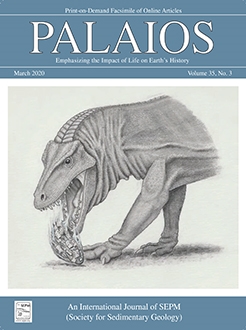Previous studies have yielded mixed results as to whether authigenic mineral infill in fossilized bone tracks specific lithologies or depositional environments, with most suggesting weak to no correlation between infill composition and host lithofacies. This study documents infill patterns in a suite of fossil bones from the Upper Cretaceous Two Medicine and Judith River formations of Montana. The composition and distribution of void-filling materials, including authigenic mineral precipitates (e.g., calcite, chlorite, iron oxides/hydroxides, sulfides, and sulfates) and sedimentary detritus, were identified (petrography and SEM-EDS), imaged (photomicrographs, BSE maps), and quantified on false color maps using ImageJ. The authigenic cement content of fossil bone is distinct at the formation scale, with Two Medicine specimens characterized by pervasive calcite infill (non-ferroan followed by ferroan phase) and local chlorite infill. In contrast, Judith River specimens are characterized by abundant unfilled primary void space, with iron oxides and sulfides, along with rare sulfates, present in all bones, albeit in low abundance. Calcite infills are rare, chlorite is absent, and detrital infill is more abundant in Judith River specimens, presumably reflecting the rapid and more complete permineralization of Two Medicine bones. The sequencing of mineral cements in voids is generally consistent within formations, but is more complex in Two Medicine specimens. Authigenic cement content does not serve to effectively distinguish among facies or localities in either formation. This study compliments previous work on rare earth element (REE) content in the same general suite of fossil bones. In the previous study, patterns in REE uptake also served to readily distinguish fossils at the formation scale, and proved more effective than authigenic cements at differentiating fossils recovered from different facies.
How to translate text using browser tools
27 March 2020
TRACKING AUTHIGENIC MINERAL CEMENTS IN FOSSIL BONES FROM THE UPPER CRETACEOUS (CAMPANIAN) TWO MEDICINE AND JUDITH RIVER FORMATIONS, MONTANA
Raymond R. Rogers,
Anik K. Regan,
Lucas N. Weaver,
Jeffrey T. Thole,
Henry C. Fricke
ACCESS THE FULL ARTICLE
It is not available for individual sale.
This article is only available to subscribers.
It is not available for individual sale.
It is not available for individual sale.

PALAIOS
Vol. 35 • No. 3
March 2020
Vol. 35 • No. 3
March 2020




